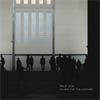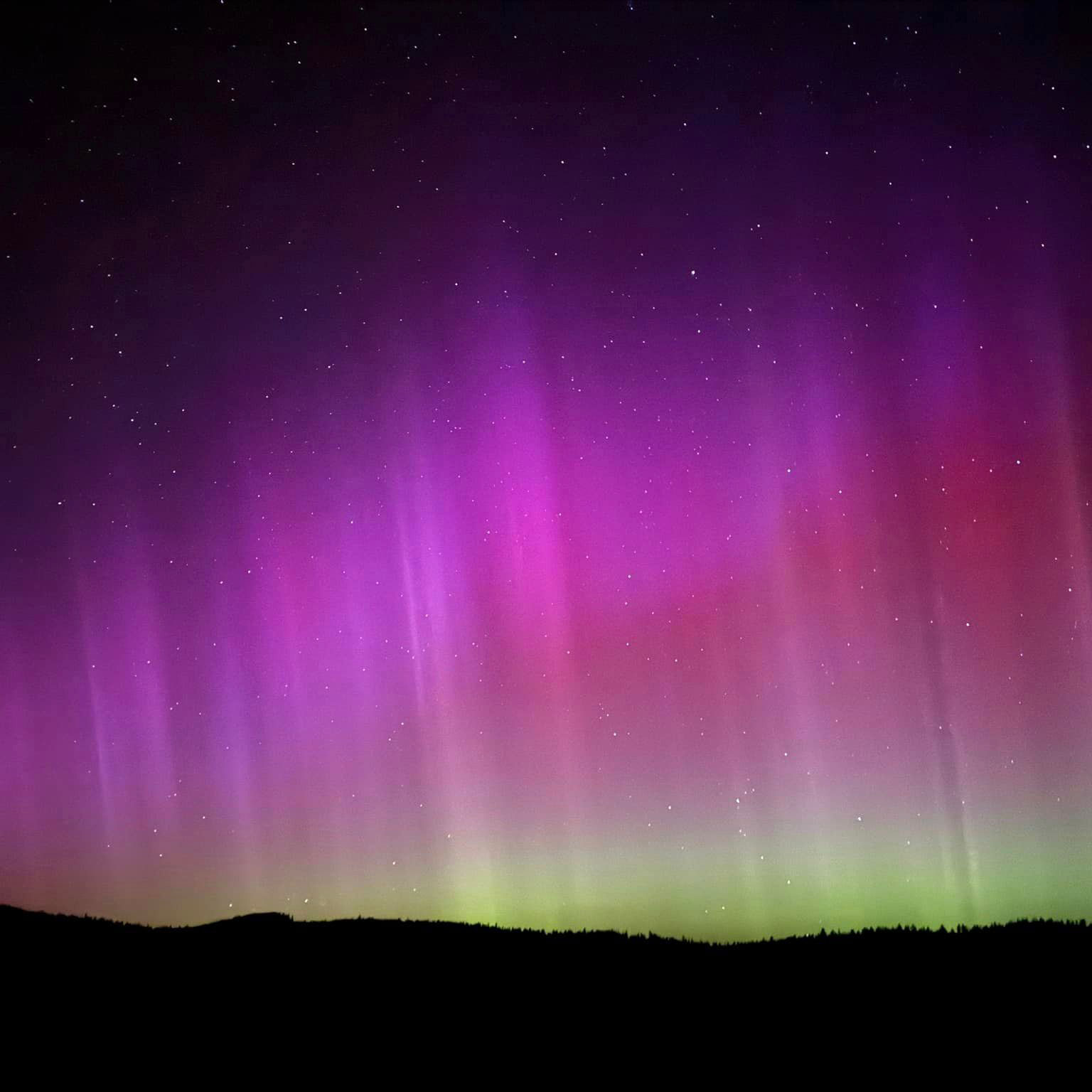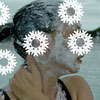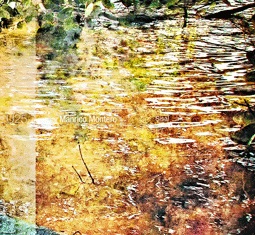 On his sixth solo album for Touch, Jeck continues his perfection of using the record player as an instrument (not as a DJ) to create a long-form piece that has no sense of gimmick or cliché, but instead is a hazy, but warm and inviting piece of captivating music that is unlike the work of anyone else. Originally intended for live performance, this studio reconstruction is amazing on its own.
On his sixth solo album for Touch, Jeck continues his perfection of using the record player as an instrument (not as a DJ) to create a long-form piece that has no sense of gimmick or cliché, but instead is a hazy, but warm and inviting piece of captivating music that is unlike the work of anyone else. Originally intended for live performance, this studio reconstruction is amazing on its own.
Look up Music for gazing upwards brought to you by Meat Beat Manifesto & scott crow, +/-, Aurora Borealis, The Veldt, Not Waving & Romance, W.A.T., The Handover, Abul Mogard & Rafael Anton Irisarri, Mulatu Astatke, Paul St. Hilaire & René Löwe, Songs: Ohia, and Shellac. Aurora Borealis image from California by Steve. Get involved: subscribe, review, rate, share with your friends, send images! |



 Originally released as a C90 and here spread across two LPs (and four tracks), Space Finale has a definitively analog quality to the sound, both in format and in the soft, obscure nature of the textures of each piece. While a very strong work, there are a few moments that hold it back from being as brilliant as it could be.
Originally released as a C90 and here spread across two LPs (and four tracks), Space Finale has a definitively analog quality to the sound, both in format and in the soft, obscure nature of the textures of each piece. While a very strong work, there are a few moments that hold it back from being as brilliant as it could be. Pat Maherr is best known for his dark ambient detournements of Wagner cassettes as Indignant Senility, but his Expressway Yo-Yo Dieting project is probably as far from dwarves and valkyries as it is possible to get. In fact, the only common ground between his two guises is that something is being unrecognizably mangled and that there are probably some tapes involved. The "somethings" in this case are: a bunch of hip-hop songs, DJ Screw's legacy, and the whole mixtape tradition. Maherr has mischievously stripped 13 unnamed hip hop jams of everything fun and vibrant and turned them into the soundtrack for a slow-motion house party of the damned (which, of course, is perversely fun in its own right).
Pat Maherr is best known for his dark ambient detournements of Wagner cassettes as Indignant Senility, but his Expressway Yo-Yo Dieting project is probably as far from dwarves and valkyries as it is possible to get. In fact, the only common ground between his two guises is that something is being unrecognizably mangled and that there are probably some tapes involved. The "somethings" in this case are: a bunch of hip-hop songs, DJ Screw's legacy, and the whole mixtape tradition. Maherr has mischievously stripped 13 unnamed hip hop jams of everything fun and vibrant and turned them into the soundtrack for a slow-motion house party of the damned (which, of course, is perversely fun in its own right). This is already the 15th release in Staalplaat's exhaustive Muslimgauze archive series, but it looks like Bryn Jones has not yet run out of minor posthumous surprises to share with the world. Originally recorded in 1995, but never released, Lazhareem Ul Leper is a series of heavy percussion experiments that stylistically fits somewhere between Jones' harsher post-industrial moments and the hypnotically looping ethno-percussion vamps that he was exploring around that same time. The unexpected twist is that it sounds like Bryn flirted with incorporating some IDM influences here as well.
This is already the 15th release in Staalplaat's exhaustive Muslimgauze archive series, but it looks like Bryn Jones has not yet run out of minor posthumous surprises to share with the world. Originally recorded in 1995, but never released, Lazhareem Ul Leper is a series of heavy percussion experiments that stylistically fits somewhere between Jones' harsher post-industrial moments and the hypnotically looping ethno-percussion vamps that he was exploring around that same time. The unexpected twist is that it sounds like Bryn flirted with incorporating some IDM influences here as well. Michael Gira founded Swans some 27 years ago. Time has brought a measure of nuance and versatility, but the raw, inhuman power of the band persists, even as many of their more lauded peers have succumbed to nostalgia or exhaustion. Pure tenacity, as much as loud guitars and violent lyrics, is what gives the new album the brute force that is characteristic of Swans at their best.
Michael Gira founded Swans some 27 years ago. Time has brought a measure of nuance and versatility, but the raw, inhuman power of the band persists, even as many of their more lauded peers have succumbed to nostalgia or exhaustion. Pure tenacity, as much as loud guitars and violent lyrics, is what gives the new album the brute force that is characteristic of Swans at their best. It has been twenty years since Laetitia Sadier and Tim Gane formed Stereolab. Sadier's voice remains a classic hypnotic sound and on her first solo record The Trip she meditates on change and loss in a personal response to her life's journey and in particular the death of her younger sister, Noelle.
It has been twenty years since Laetitia Sadier and Tim Gane formed Stereolab. Sadier's voice remains a classic hypnotic sound and on her first solo record The Trip she meditates on change and loss in a personal response to her life's journey and in particular the death of her younger sister, Noelle. Location is integral to Manrico Montero’s Sisal, as it is with virtually all of the albums released on Unfathomless. Without it, there is still music, but the context and inspiration driving it is at least partially effaced. Sisal is both the common name for Agave sisalana, a species of agave cultivated for the fibers it yields, and the name of a small port town located in the Yucatán Peninsula, where said fibers play a significant role in the economy. But the album focuses on another species native to the region. With just one exception, each of its tracks are named for the mangrove trees that grow in a nearby area called La Bocana ("The Mouth"), where seawater meets the freshwater of a cenote. Montero’s recordings capture plenty of maritime activity around these trees, including the rocking of ship hulls, strong coastal winds, and a multitude of insect and animal life. They also expose sounds that are not ready-at-hand, that are a part of the place without appearing as such.
Location is integral to Manrico Montero’s Sisal, as it is with virtually all of the albums released on Unfathomless. Without it, there is still music, but the context and inspiration driving it is at least partially effaced. Sisal is both the common name for Agave sisalana, a species of agave cultivated for the fibers it yields, and the name of a small port town located in the Yucatán Peninsula, where said fibers play a significant role in the economy. But the album focuses on another species native to the region. With just one exception, each of its tracks are named for the mangrove trees that grow in a nearby area called La Bocana ("The Mouth"), where seawater meets the freshwater of a cenote. Montero’s recordings capture plenty of maritime activity around these trees, including the rocking of ship hulls, strong coastal winds, and a multitude of insect and animal life. They also expose sounds that are not ready-at-hand, that are a part of the place without appearing as such.
